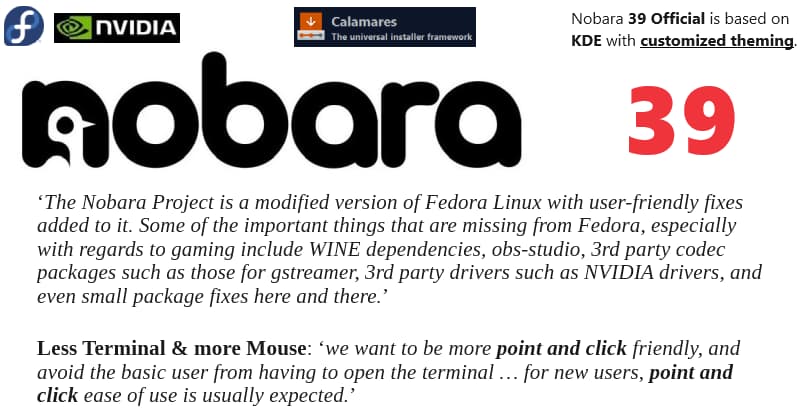
Nobara Linux was first released on 7/10/2022, obviously quite new, and it is being developed & maintained by Thomas Crider ‘GloriousEggroll’ – a “Software Maintenance Engineer @ Red Hat. Wine-Staging maintainer. Tinkerer.” Apparently, in his spare time he developed Proton-GE. 😉
I have followed it fairly closely – did two reviews – 11/7/2022 (Nobara Linux 36 – ‘New modified version of Fedora Linux’) & 1/15/2023 (Nobara Linux 37 – ‘Keep an Eye on this Up & Coming Linux OS!‘).
‘The Nobara Project is a modified version of Fedora Linux with user-friendly fixes added to it. Some of the important things that are missing from Fedora, especially with regards to gaming include WINE dependencies, obs-studio, 3rd party codec packages such as those for gstreamer, 3rd party drivers such as NVIDIA drivers, and even small package fixes here and there.’
Less Terminal & more Mouse: ‘we want to be more point and click friendly, and avoid the basic user from having to open the terminal … for new users, point and click ease of use is usually expected.’
Installation
We recommend using Balena Etcher to burn the ISO to your USB stick:
We offer three versions of Nobara: Official, GNOME, and KDE.
Nobara 39 Official is based on KDE with customized theming.
Nobara 39 GNOME is a vanilla GNOME build.
Nobara 39 KDE is a vanilla KDE build.
If you have a current Nvidia GPU then they also provide the latest driver for it—if your GPU is too old it may not be supported with the latest driver. I downloaded the Nobara-39-Official-Nvidia-2023-12-24.iso @ 3.90GB.
Unless you’re a GNOME enthusiast then I suggest going with the Official based on a customized KDE version—it is incredibly easy to use for anyone not familiar with Linux or KDE.
I used Balena Etcher to create a bootable 16GB installation USB.
When Nobara first started they used the Anaconda (installer), which can be confusing to some new users. They now use the Calamares (installer), perhaps in order to continue being “user-friendly” for new users.
Welcome screen opens then installer wants your location:
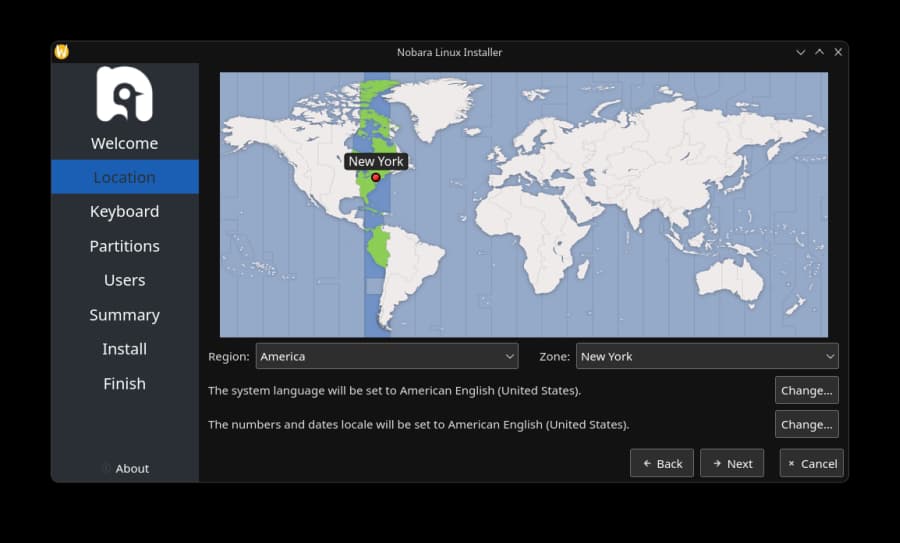
Then keyboard info:
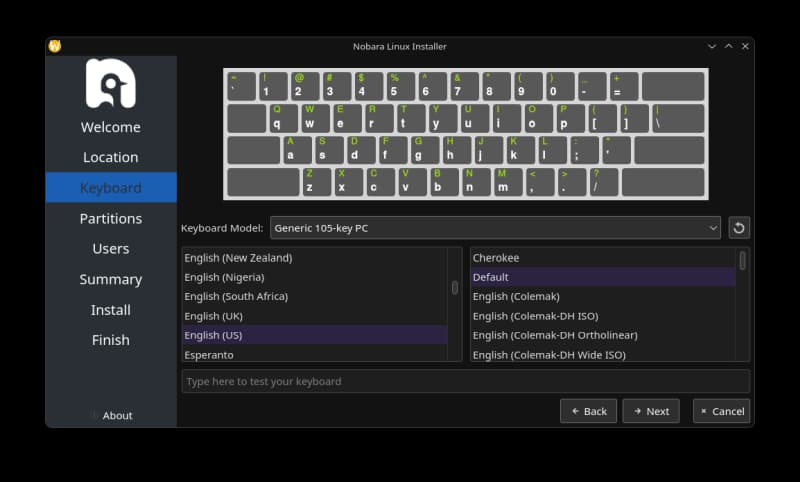
Be sure to select the correct Storage/Target device next:
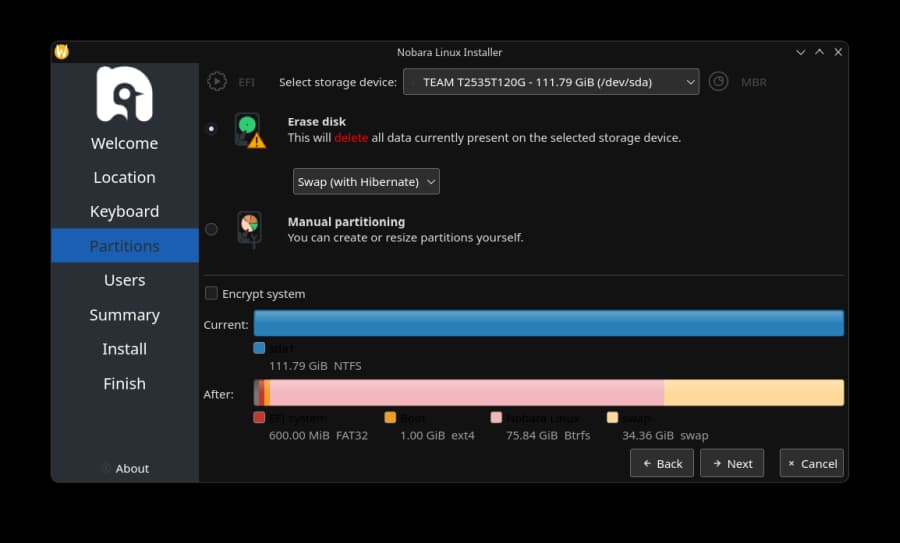
I selected the automated “Erase disk” option.
It then does a double-check with a Summary of what the installer is about to do:
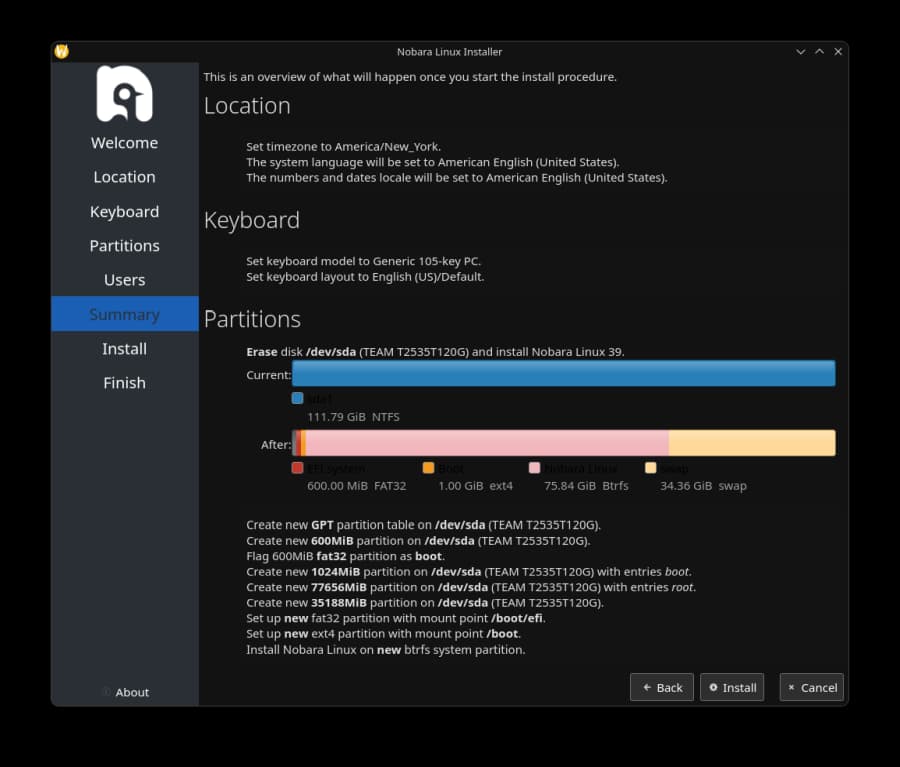
Installation starts:
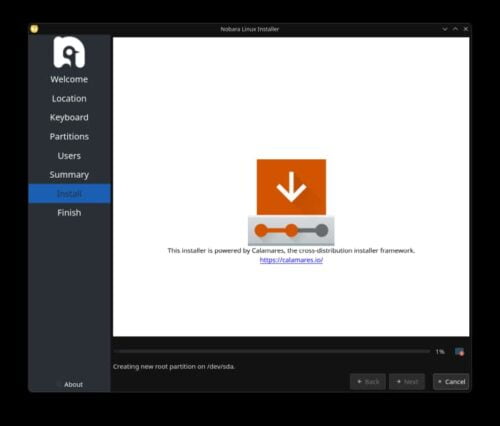
Quick installation & “All done”:
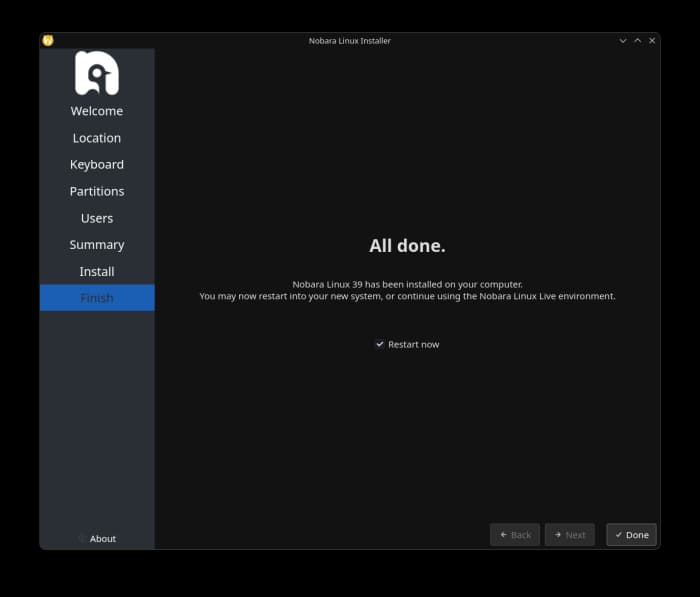
Check the “Restart now” box and it will reboot into new installation.
Post Installation
I had a couple issues pre & post installation, but will get to those later in this post.
Booting into new desktop is the Welcome popup:
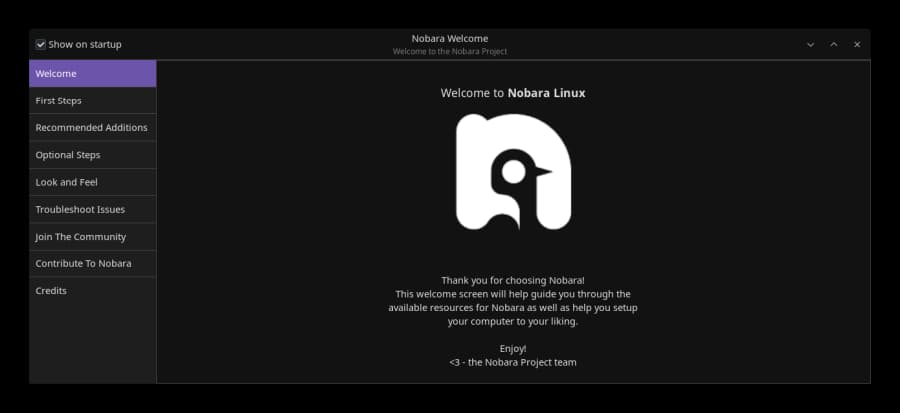
Then another quick popup over that with a “Question”:

I selected Yes and let it do the “system upgrade” first.
After system upgrade I selected the “First Steps” option on the Nobara Welcome window:
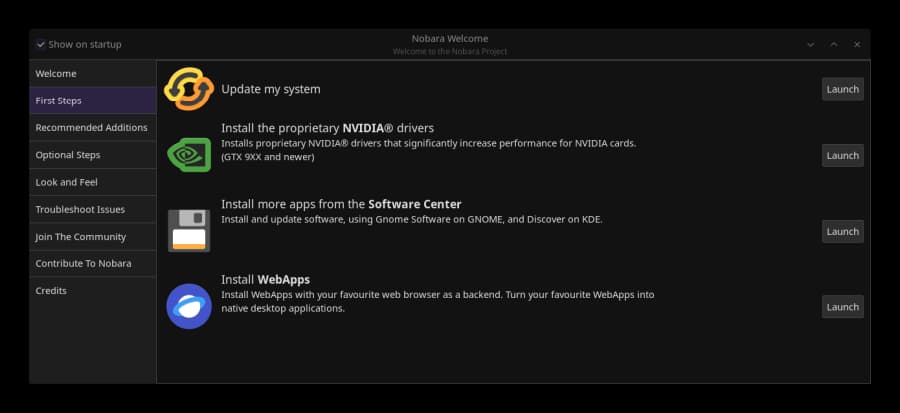
Installed the Nvidia driver. “Install more apps” launched KDE Discover and I installed more apps. There is also a Nobara Package Manager to handle adding apps. I didn’t need the terminal to install anything – just all ‘point and click’ with the mouse. 👍👌🙂
Here’s the “About this System”:
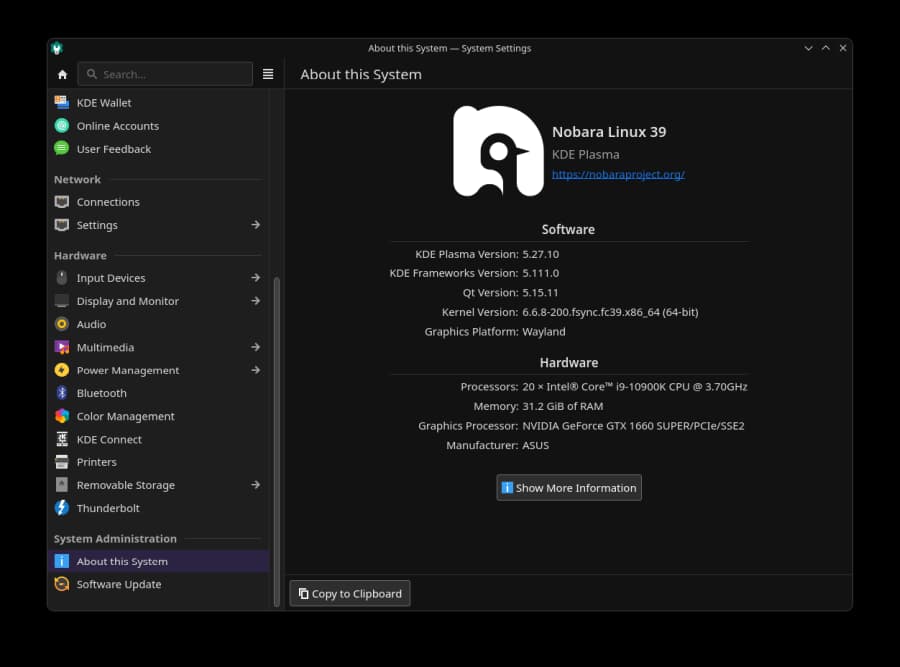
Here’s a shot of the Nvidia driver and apps on Task Manager:
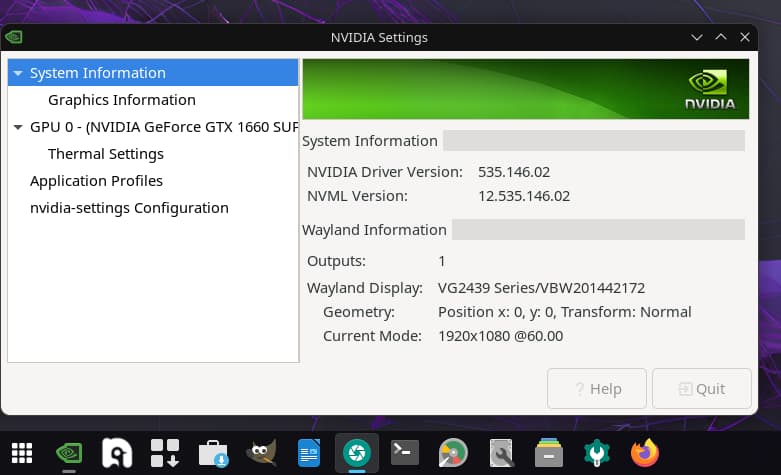
Issues with ‘Hobby distribution’
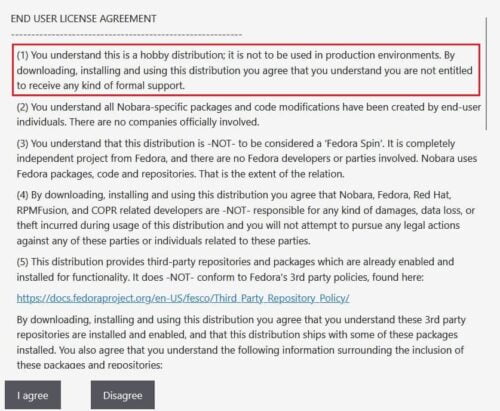
I had used a 120GB test SSD, and for some reason it wouldn’t do a reboot. Prior to installation, when selecting the test media option, it kept rejecting the media so I just skipped testing it.
‘Rose’ is my main test computer, and maybe Nobara didn’t like the Kingwin KF-251-BK Dual-Bay Internal Tray-less Rack Hot-Swap bay I had the test SSD in, but it took a couple of attempts before it would reboot into the OS. I use those bays to keep OSes separate from each other during tests.
Another issue I had was it would sometimes go to a blank screen when I was doing a task. That seems to have ended after doing some tweaking and updating.
Conclusion
Seemed a little more ‘sensitive’ this time during tests, but may have been with the test 120GB SSD or something about the ‘Rose’ test machine…I dunno. Maybe not totally ready for some new users yet, unless they were looking for a great Linux OS to ‘Grow’ with.
Overall, it was a great test, and Nobara Linux Official version was extremely easy to move around in and to use. Vanilla KDE Plasma can be daunting for most new users, but developer Thomas Crider has done an excellent job of customizing KDE in the Official version, and it would be easy for Windows users, Cinnamon DE users, and even Mate DE users to use, IMHO.
Keep your eye on this Linux Distro!!!